When you think of a Mac today, you probably imagine a fast, powerful machine powered by Apple’s latest M4 chip. But Macs weren’t always this advanced. Their journey began in the 1980s with the Motorola 68K series—a much simpler processor. Over the years, Apple transitioned to PowerPC, then Intel, and finally, its own Apple Silicon chips.
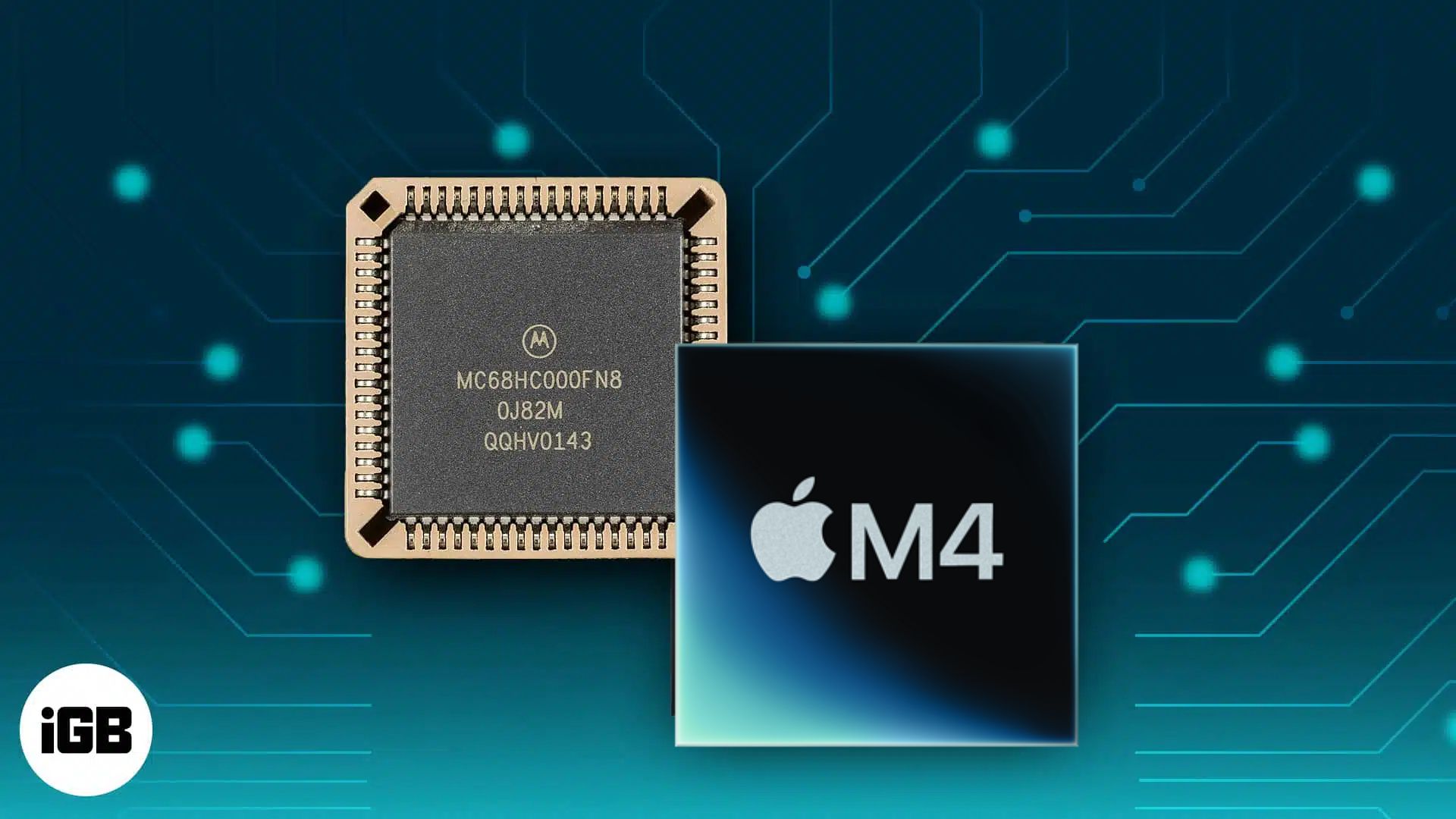
In this article, we’ll explore how Mac processors have evolved over time. You’ll see how each new chip improved speed, graphics, and memory, shaping the powerful Macs we use today.
2020–present: Apple Silicon

On June 22, 2020, Apple CEO Tim Cook announced a two-year transition plan to move from Intel processors to Apple Silicon. The goal was to create an all-Apple ecosystem by replacing Intel’s x86-64 architecture with Apple’s native ARM64-based chips.
Staying true to its timeline, Apple introduced its first Apple-designed chip, M1, in November 2020. This was followed by more powerful M1 variants in 2021. Apple then launched the M2, M3, and M4 chipsets, further pushing the boundaries of performance.
Here’s a detailed table outlining the evolution of Mac processors, from the latest Apple M4 Max back to the M1:
| Processor | Featured Mac Models | Introduction Year | RAM | Key Specs | Availability |
| M4 Max | 14-inch MacBook Pro 16-inch MacBook Pro Mac Studio (2025) | October 2024 | 36GB, 48GB, 64GB, 128GB | CPU: 14- or 16-core GPU: 32- or 40-core Neural Engine: 16-core Memory Bandwidth: 410GBps or 546GBps | 2024 – Present |
| M4 Pro | 14-inch MacBook Pro 16-inch MacBook Pro Mac mini (2024) | October 2024 | 24GB, 48GB | CPU: 12- or 14-core GPU: 16- or 20-core Neural Engine: 16-core Memory Bandwidth: 273GBps | 2024 – Present |
| M4 | 13-inch MacBook Air 15-inch MacBook Air 14-inch MacBook Pro Mac mini (2024) iMac (2024) | May 2024 | 16GB, 24GB, 32GB | CPU: 8- or 10-core GPU: 8- or 10-core Neural Engine: 16-core Memory Bandwidth: 120GBps | 2024 – Present |
| M3 Ultra | Mac Studio (2025) | March 2025 | 96GB, 256GB, 512GB | CPU: 28- or 32-core GPU: 60- or 80-core Neural Engine: 32-core Memory Bandwidth: 800GBps | 2025 – Present |
| M3 Max | MacBook Pro (14-inch, 16-inch) (2023) | October 2023 | 36GB, 48GB, 128GB | CPU: 14- or 16-core GPU: 14- or 18-core Neural Engine: 16-core Memory Bandwidth: 300GBps or 400GBps | Discontinued by Apple |
| M3 Pro | MacBook Pro (14-inch, 16-inch) (2023) | October 2023 | 18GB, 36 GB | CPU: 11- or 12-core GPU: 14- or 18-core Neural Engine: 16-core Memory Bandwidth: 150GBps | Discontinued by Apple |
| M3 | 13-inch MacBook Air (2023) 15-inch MacBook Air (2023) iMac (2023) 14-inch MacBook Pro (2023) | October 2023 | 8GB, 16GB, 24GB | CPU: 8-core GPU: 8- or 10-core Neural Engine: 16-core Memory Bandwidth: 100GBps | Discontinued by Apple |
| M2 Ultra | Mac Studio (2023) Mac Pro (2023) | June 2023 | 64GB, 128GB, 192GB | CPU: 24-core GPU: 60- or 76-core Neural Engine: 32-core Memory Bandwidth: 800GBps | Only Mac Pro is available |
| M2 Max | Mac Studio (2023) 14-inch MacBook Pro (2023) 16-inch MacBook Pro (2023) | January 2023 | 32GB, 64GB, 96GB | CPU: 12-core GPU: 30- or 38-core Neural Engine: 16-core Memory Bandwidth: 400GBps | Discontinued by Apple |
| M2 Pro | Mac mini (2023) 14-inch MacBook Pro (early 2023) 16-inch MacBook Pro (early 2023) | January 2023 | 16GB, 32GB | CPU: 10- or 12-core GPU: 14- or 16-core Neural Engine: 16-core Memory Bandwidth: 200GBps | Discontinued by Apple |
| M2 Processor | 13-inch MacBook Air (2022) 13-inch MacBook Pro (2022) 15-inch MacBook Air (2023) Mac mini (2023) | June 2022 | 8GB, 16GB, 24GB | CPU: 8-core GPU: 8- or 10-core Neural Engine: 16-core Memory Bandwidth: 100GBps | Discontinued by Apple |
| M1 Ultra | Mac Studio (2022) | March 2022 | 64GB, 128GB | CPU: 20-core GPU: 48- or 64-core Neural Engine: 32-core Memory Bandwidth: 800GBps | Discontinued by Apple |
| M1 Max | 14-inch MacBook Pro (2021) 16-inch MacBook Pro (2021) Mac Studio (2022) | October 2021 | 32GB, 64 GB | CPU: 10-core GPU: 24- or 32-core Neural Engine: 16-core Memory Bandwidth: 400GBps | Discontinued by Apple |
| M1 Pro | 14-inch MacBook Pro (2021) 16-inch MacBook Pro (2021) | October 2021 | 16GB, 32GB | CPU: 8-core GPU: 8- or 10-core Neural Engine: 16-core Memory Bandwidth: 100GBps | Discontinued by Apple |
| M1 Processor | 13-inch MacBook Pro (2020) MacBook Air (2020) Mac mini (2020) iMac (2021) | November 2020 | 8GB, 16GB | CPU: 8-core GPU: 7- or 8-core Neural Engine: 16-core Memory Bandwidth: 68.25GBps | Discontinued by Apple |
M4 Chip family: M4, M4 Pro, and M4 Max
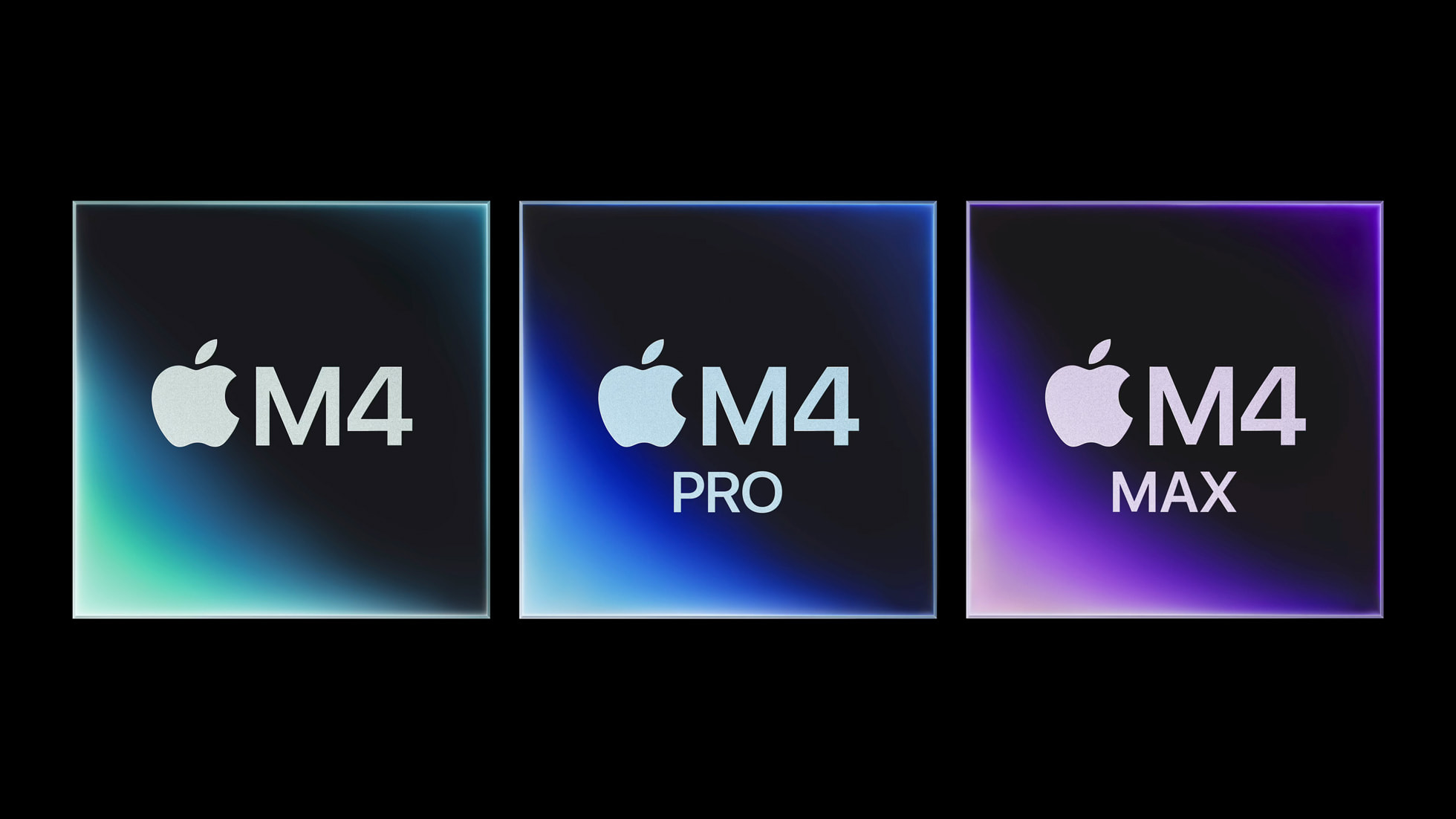
Apple’s M4 chip family represents the latest advancements in silicon technology, delivering enhanced performance and efficiency across various devices. Each chip—M4, M4 Pro, and M4 Max—is designed to meet different user needs.
M4 (May 2024)
The standard M4 chip is built using second-generation 3-nanometer technology, enhancing power efficiency and performance. It features a 10-core CPU with four performance cores and six efficiency cores, delivering up to 1.8 times faster performance than the M1 chip.
The 10-core GPU provides graphics performance up to twice as fast as the M1, making tasks like photo editing and gaming smoother. The 16-core Neural Engine, capable of performing up to 38 trillion operations per second, significantly boosts AI-related tasks and features like Apple Intelligence.
M4 Pro (October 2024)
The M4 Pro chip is designed for users with more demanding workflows. It boasts a 14-core CPU, comprising ten performance cores and four efficiency cores, offering up to 1.9 times faster performance than the M1 Pro.
The GPU includes up to 20 cores, providing graphics performance twice that of the standard M4. This makes it ideal for professionals engaged in tasks like app development, video editing, and complex simulations.
M4 Max (October 2024)
The M4 Max chip is the most powerful in the M4 family, targeting users requiring extreme performance. It features a 14-core CPU with ten performance cores and four efficiency cores, similar to the M4 Pro.
However, its GPU scales up to 32 cores, delivering exceptional graphics capabilities suitable for high-end tasks such as 3D rendering and large-scale data processing. The M4 Max also supports higher unified memory bandwidth, enhancing data-intensive operations.
All M4 chips support advanced features like hardware-accelerated ray tracing and mesh shading, enhancing graphics rendering and gaming experiences. They also enable Thunderbolt 5 connectivity, offering faster data transfer speeds and improved peripheral support.
M3 Chip family: M3, M3 Pro, M3 Max, and M3 Ultra
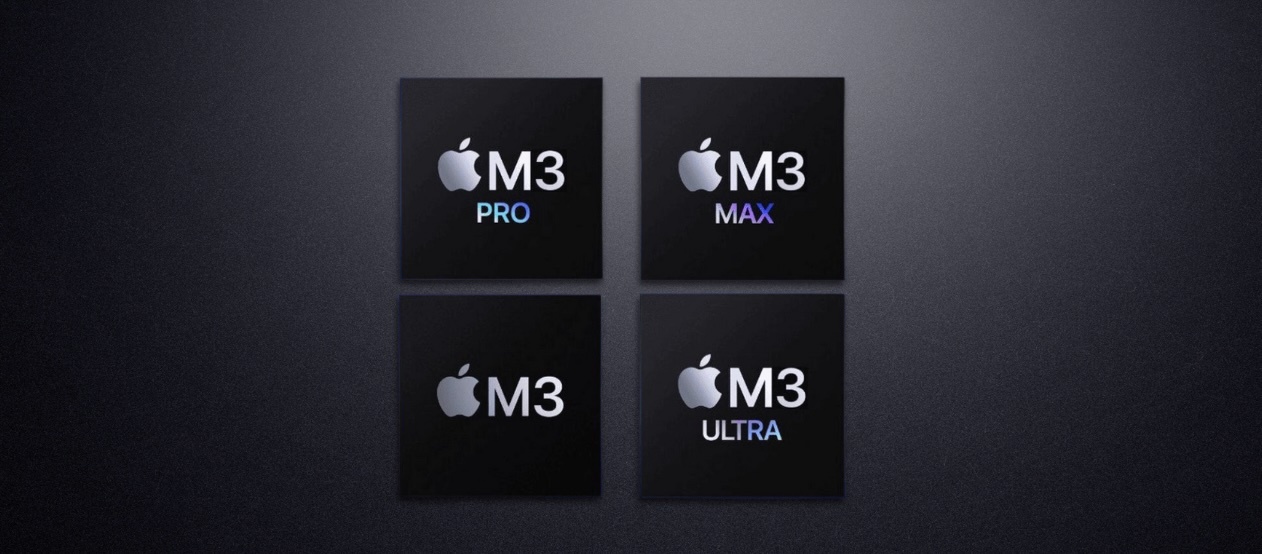
Apple’s M3 chipset family includes four powerful processors: M3, M3 Pro, M3 Max, and M3 Ultra. Each is designed to meet different performance needs, from everyday tasks to demanding professional workloads.
M3 (October 2023)
The M3 chip is built using advanced 3-nanometer technology, making it faster and more efficient. It features an 8-core CPU with four performance cores and four efficiency cores, delivering up to 30% faster performance than the M1.
The 10-core GPU provides enhanced graphics performance, making tasks like photo editing and gaming smoother. The 16-core Neural Engine, capable of performing up to 15.8 trillion operations per second, significantly boosts AI-related tasks.
M3 Pro (October 2023)
The M3 Pro chip is designed for users with more demanding workflows. It boasts a 12-core CPU, comprising six performance cores and six efficiency cores, offering up to 40% faster performance than the M1 Pro.
The GPU features up to 18 cores, delivering graphics performance ideal for professionals in video editing, programming, and other demanding tasks. Apple has also integrated 37 billion transistors to enhance the overall performance of Mac machines.
M3 Max (October 2023)
The M3 Max chip is one of the most powerful in the M3 family, targeting users requiring extreme performance. It features a 14-core CPU with ten performance cores and four efficiency cores, similar to the M3 Pro.
However, its GPU scales up to 38 cores, delivering exceptional graphics capabilities suitable for high-end tasks such as 3D rendering and large-scale data processing. The M3 Max also has 92 billion transistors to enhance data-intensive operations.
M3 Ultra (March 2025)
The M3 Ultra chip is Apple’s most powerful processor to date. It features a 32-core CPU with 24 performance cores and eight efficiency cores, delivering up to 1.8 times the performance of the M1 Ultra.
Its GPU includes up to 80 cores, providing up to 2.6 times faster graphics performance than the M1 Ultra. The M3 Ultra also supports up to 512GB of unified memory—the highest ever in a personal computer—making it ideal for tasks like visual effects and AI development.
M2 Chip family: M2, M2 Pro, M2 Max, and M2 Ultra
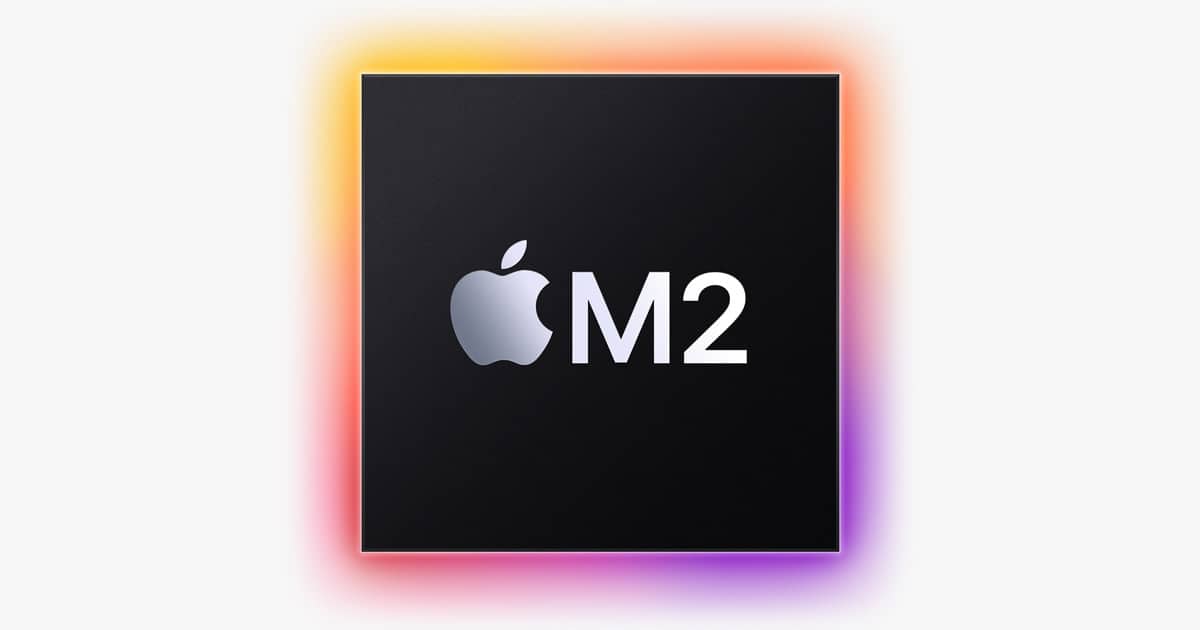
M2 (June 2022)
The M2 processor in the MacBook houses an 8-core CPU with a configuration of 4 performance cores and 4 efficiency cores. Apple claims that M2’s CPU gives two times more promising performance than the latest 10-core PC laptop processor.
In addition, the M2 processor offers unparalleled work performance with an 8—or 10-core GPU, 16-core neural engine, and 100GBps bandwidth. M2 chips have different RAM variations: 8GB, 16GB, and 24 GB.
M2 Pro (January 2023)
M2 Pro has a robust 10-core or 12-core CPU, including 6 or 8 performance and 2 efficiency cores. Like the M1 Pro, the M2 Pro has an inbuilt media engine that accelerates H.264, HEVC, and ProRes video encoding and decoding. Besides, the chip provides improved power efficiency when playing 4K and 8K ProRes streams thanks to the 16- or 19-core GPU.
Further, the M2 Pro has a 16-core neural engine, 200 GBps memory bandwidth, and 16 GB or 32 GB RAM variants. Apple claimed the M2 Pro offered exceptional image processing capabilities. However, it is only equipped with a MacBook Pro to handle its high efficiency.
M2 Max (January 2023)
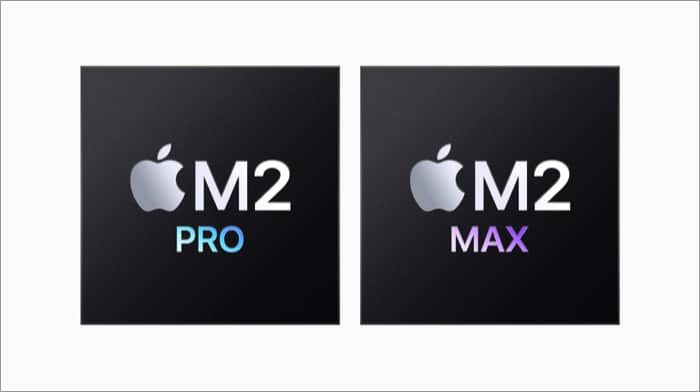
M2 Max added another layer of efficiency to the Apple Silicon range. Its core specifications included a 12-core CPU with 8 performance and 4 efficiency cores. Like its predecessor, the M2 Max comes with two ProRes and video-encoding engines.
Regarding graphics, it supports a 30- or 38-core GPU to give you the most detailed output. While the GPU support is better than M1 Max, the 16-core neural engine remains the same for both variants. In addition, Apple introduced the chip in 3 RAM variants- 32 GB, 64 GB, and 96 GB.
Moreover, Apple asserted that the M2 Max was 30% better than the M1 version when using color grading in DaVinci Resolve. It also offers 400 GB of memory bandwidth, ensuring quick processing.
M2 Ultra (June 2023)
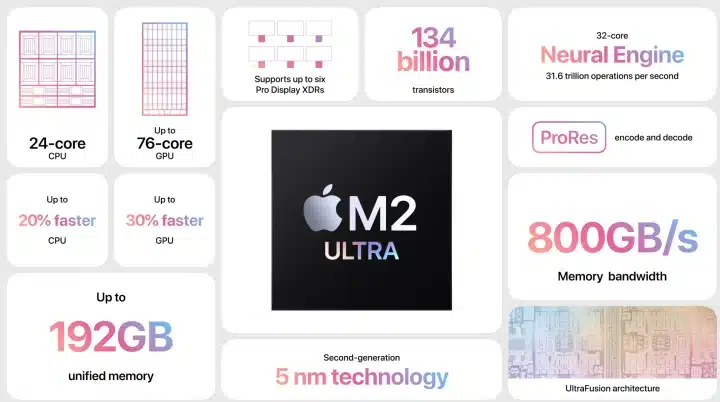
At the recent WWDC 2023, Apple launched its most efficient iteration of the Apple Silicon series: M2 Ultra. It offers the power of two M2 Max chips interwoven using the robust UltraFusion architecture. Regarding specifications, M2 Ultra features a 24-core CPU and a maximum of 76-core GPU support.
It also carries 134 billion transistors, up to 192GB of unified memory, and an impressive 800 GB of memory bandwidth. You can experience this beast in the latest Mac Studio and Mac Pro. According to Apple, Mac Studio with M2 Ultra is 3x faster than its earlier version.
Besides, it can run 22 streams of 8K ProRes video together. The M2 Ultra chip allows Mac Pro to offer 3D simulations and video transcoding at up to 3x faster speeds. Moreover, the processor can consume 24 inputs of 4K cameras simultaneously and encode them to ProRes simultaneously.
M1 Chip family: M1, M1 Pro, M1 Max, and M1 Ultra
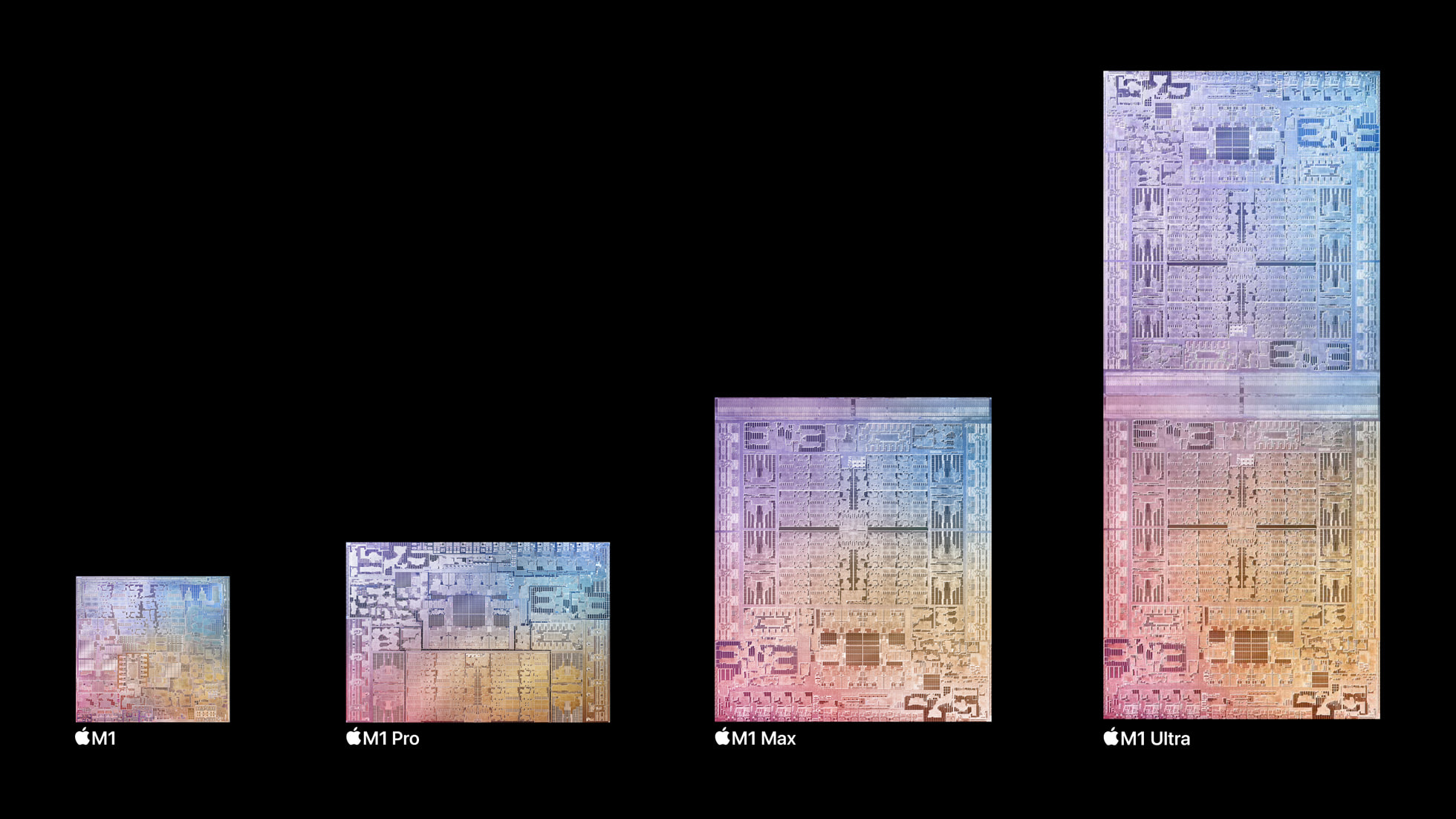
M1 (November 2020)
The M1 processor was Apple’s first venture into chip design for the Mac. Indeed, it was a big blow for Intel! Regarding specs, M1 chips offer an 8-core CPU with 4 performance and 4 efficiency cores and a 7- or 8-core GPU support.
Besides, the 16-core Neural Engine embedded in the M1 series accelerates and optimizes machine learning operations on Mac. In addition, the chip offered 68.25 GB of memory bandwidth. However, it only supported two RAM variations—8GB and 16GB. The small storage capacity didn’t go down well with many Mac users.
M1 Pro (October 2021)
Next in line in the M1 series was M1 Pro. This chipset supported 8-or-10-core CPUs, configured as 6 or 8 performance and 2 efficiency cores. Besides, Apple included a 14-or-16-core GPU, which is 2x faster than M1. Also, the new GPU was up to 7x more quickly than the integrated graphics on the 8-core laptop chip.
Besides, it featured a ProRes accelerator in the media engine for faster video processing. Its memory bandwidth of up to 200 GB is nearly 3x better than the M1. This time, Apple expanded its storage capacity with M2, introducing 16GB and 32GB chips.
M1 Max (October 2021)
The M1 Max and M1 Pro chips were launched together. They had a 10-core CPU with 8 performance and 2 efficiency cores, a 24- or 32-core GPU, and a 16-core Neural Engine. The graphics performance of the 32GB GPU is up to 4x faster than that of the M1 chip.
Its two ProRes accelerators can deliver up to 2x faster video encoding than M1 Pro. Moreover, the processor offers up to 400 GB of memory bandwidth, two times more than the M1 Pro and 6x improved than the M1. Besides, the 64GB RAM adds some extra credit points.
Apple introduced the M1 Max chip only for the MacBook Pro and Mac Studio.
M1 Ultra (March 2022)
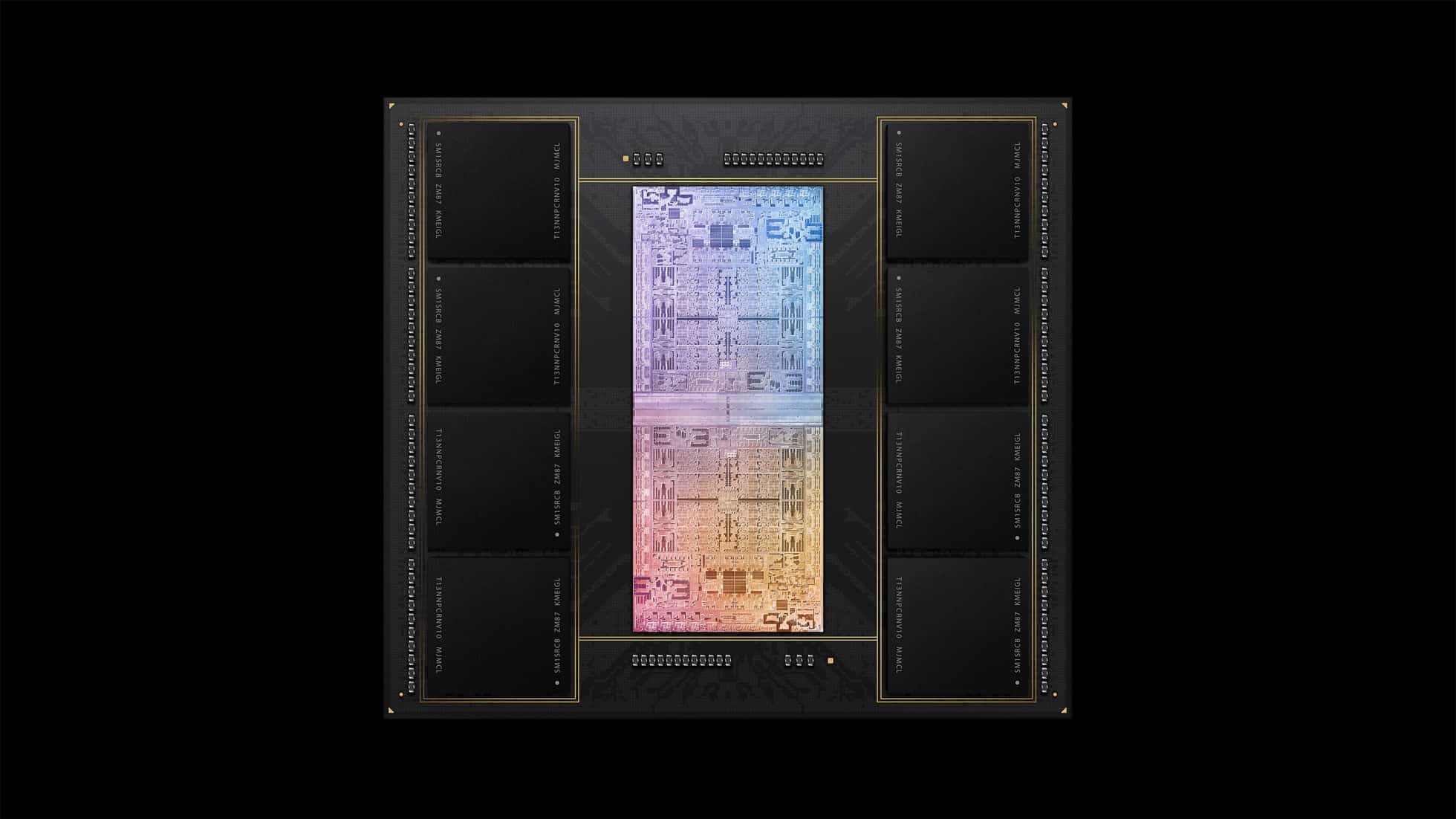
The M1 Ultra was launched as a standard option for the Mac Studio. This powerful processor has UltraFusion architecture connecting the two M1 Max chips. It houses a 20-core CPU with 16 performance and 4 efficiency cores. For graphics, Apple added a massive 48- or 64-core GPU support.
So, you get improved latency, reduced bandwidth, and better power consumption. Furthermore, the chip has up to 128GB of unified memory built, offering twice the media engine performance of the M1 Max.
2006-2020: Intel x86
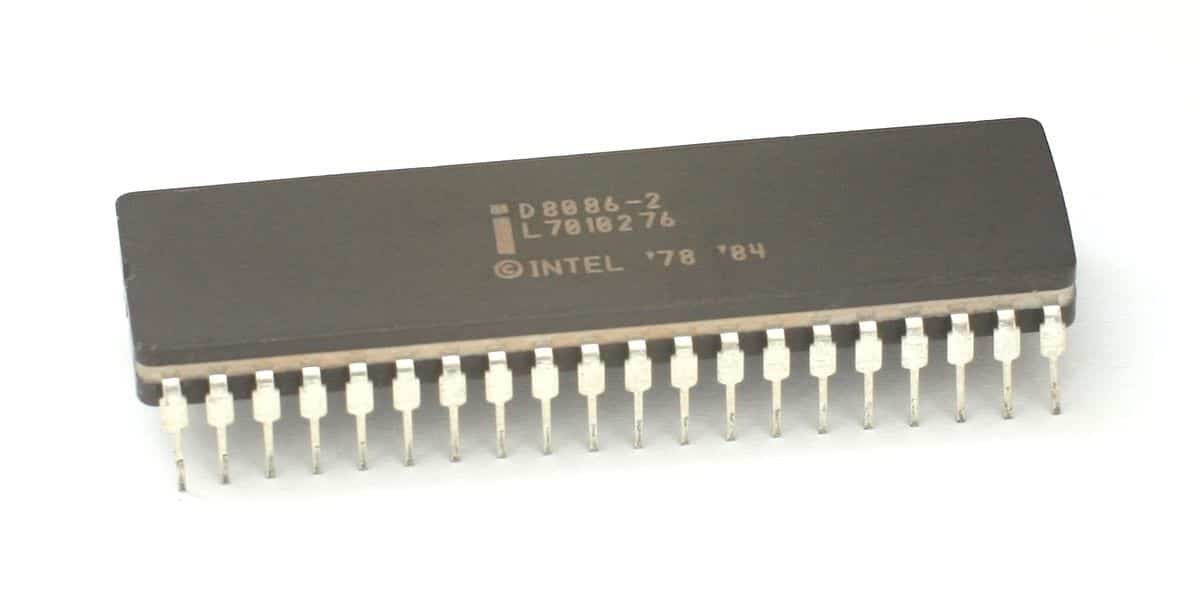
At WWDC 2005, Apple announced its transition to Intel chips, and the first Intel Macs were announced in early 2006. These included an iMac and the MacBook Pro, which boasted almost four-fold enhanced performance from their predecessors.
Further, from Mac OS X 10.4.4, Apple included an advanced emulation technology called Rosetta. It helped maintain software compatibility between generations. Soon, Apple introduced programs with universal binaries that could run on both PowerPC and Intel Macs.
As the transition to x86 eventually came a full circle, Rosetta was removed from Mac OS X 10.7 Lion going forward. So far, about 80 Mac models have featured Intel CPUs. This changed with the introduction of ARM-based Macs.
1994-2005: Power PC
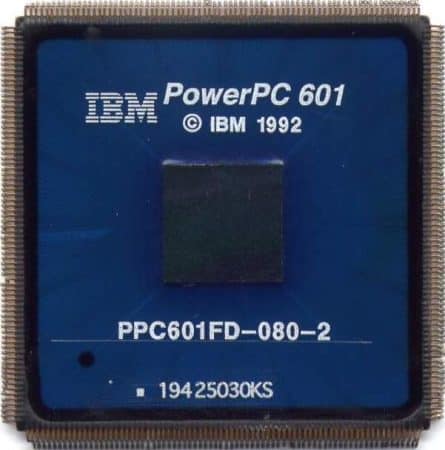
In the late 1980s, new trends began taking over the computing industry, overshadowing the legacy CPU architectures. Apple partnered with IBM and Motorola to design a common CPU platform that could rival the “Wintel” (Microsoft-Intel) domination.
The Power Macintosh 6100 used the PowerPC architecture, following which around 87 different Mac models were launched. Clock speeds increased from 60 MHz to 2.7 GHz, which was remarkable for that era. The final Apple PowerPC model was released in November 2005.
1984-1995: Motorola 68 K
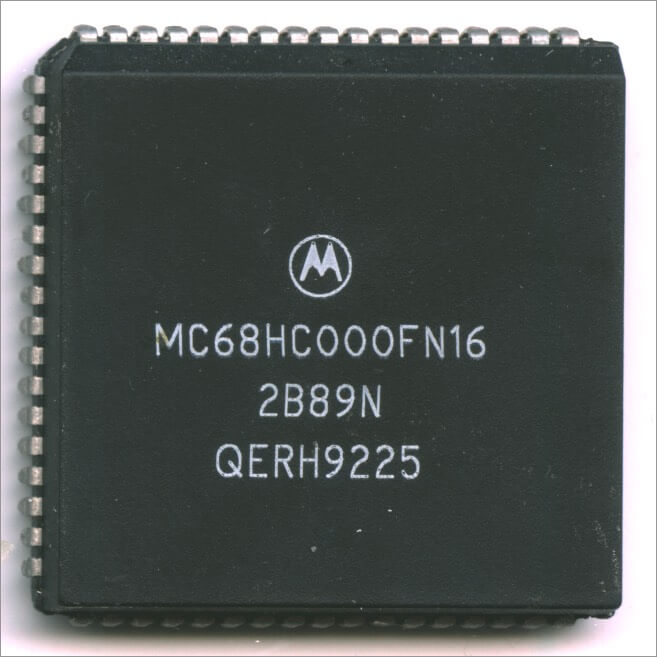
The 1984 Apple Macintosh computer had an 8 MHz Motorola 68000 CPU. While in development, an early Mac prototype used an 8/16-bit Motorola 6809 CPU. But after a designer noticed the impressive graphics routines that were being created for the 68000-based Apple Lisa, the more expensive 16/32-bit 68000 was chosen.
While the Apple Lisa used only a 5 MHz 68000, the new Mac prototype could run at 8 MHz. This appealed to Steve Jobs, who was eager to upstage the Lisa team.
Over the following decade, every Macintosh used successors of the 68000, including the pure 32-bit 68020, 68030, and 68040 chips. These got faster and more complex over time. Overall, at least 72 different Macs used 68k CPUs, the last of which was the PowerBook 190 in 1995.
The best is yet to come!
The history of Apple processors beautifully captures the tech giant’s true ideology. The Mac has witnessed everything from laptop size to its architecture. I hope you enjoyed reading this article as much as we enjoyed traveling the Mac timeline while penning it.
Please share your reviews in the comments section. Till then, enjoy reading.
FAQs
The oldest Mac software is Mac OS X Server 1.0.
The complete form of the Mac is Macintosh.
Do check these, too!


